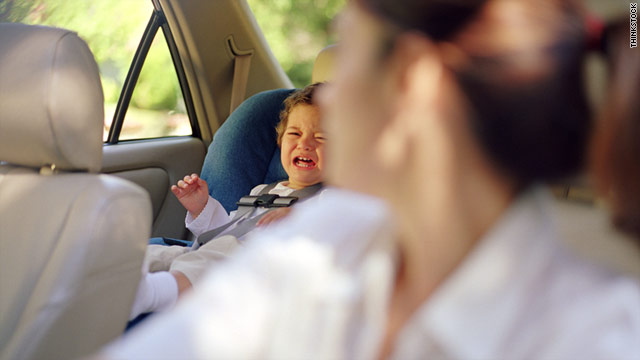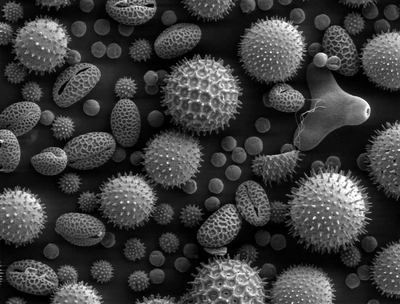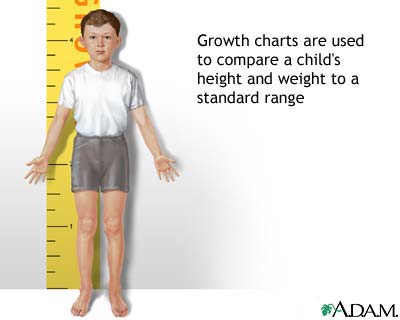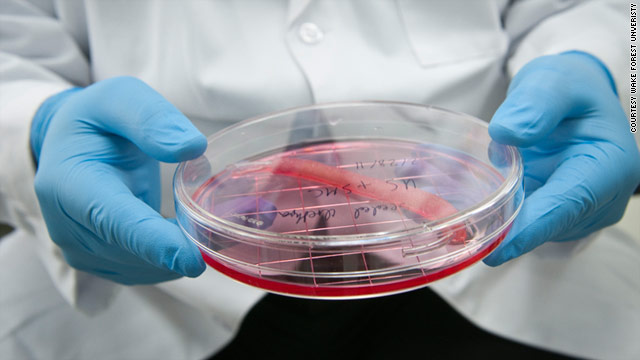By Stephanie Dolgoff, Parenting.comMarch 14, 2011 10:42 a.m. EDT

(Parenting.com) -- It was one of those moments that you feel, rather than see, in excruciating, punishing slow motion: Four-month-old Tyler Glowacz fell from his bouncer, which was on the kitchen table, and landed on the ceramic floor. "I was only a couple of feet away, but his bouncer was on the table and he wasn't strapped in. Stupid mistake -- I know," admits his mom, LuAnn, of Austin, Texas. She was relieved that Tyler began crying -- silence would have been a more ominous sign -- but she knew she had to get her son to an emergency room.
When they arrived, the ER nurse at the local hospital thought Tyler looked fine, but Glowacz insisted on a head scan anyway. "It turned out that the baby had two skull fractures and had to be transferred to the Children's Hospital by ambulance immediately," she says. A night and a day and many tests later, Tyler was sent home. Now 14 months old, he's perfectly fine and has no memory of his table dive. But his mom will never forget it. "That was the longest night of my life," she says.
When your kid is screaming, blood is flowing, and emotions are bubbling over, it can be hard to tell if a situation is a true emergency, something that can be treated in your doctor's office, or an issue you can handle at home once things calm down. How do you know? Let your pediatrician help you decide.
"It is always, always better to call the pediatrician before going to the ER for anything but life-threatening emergencies," injuries or conditions that, if they didn't get medical attention, could result in death, says Lara Zibners, M.D., a pediatric ER doctor and author of "If Your Kid Eats This Book, Everything Will Still Be OK: How to Know if Your Child's Injury or Illness Is Really an Emergency." (For more advice on when to call 911, read
9 Pediatric Emergency Essentials.)
Otherwise, your child's doctor will deal with the issue over the phone, have you come into the office, or call the ER ahead of time to alert them that your child is on the way. If you need to go to the hospital, your child's doctor can impart key information to ER personnel, and his call can speed up your wait time once you arrive, notes Zibners. To make the decision easier, we spoke to pediatric ER doctors about 10 common kid accidents and how to handle them.
1. Your child does a face-plant off the playground slide and knocks her tooth loose. Head to the ER?
No. Call the dentist instead. That's whom the ER doctor is probably going to call herself, says Zibners. Assuming it's a baby tooth that's affected, the dentist is likely to pull it if it's dangling. "You don't want your child to inhale a tooth that's been knocked loose, but other than that, it's usually more of a cosmetic issue," says Karen Frush, M.D., a pediatric emergency room doctor and chief patient safety officer at Duke University Health System in Durham, N.C.
Another reason to call your D.D.S.: If the tooth gets shoved into the gum, it might damage the developing adult tooth, and the dentist will need to treat that, too.
If a baby tooth is whacked completely clear of the mouth, there's no need to save it. But if a bigger kid knocks out a permanent chomper, put it in a cup of milk and bring it and your child to the dentist immediately; he may be able to reimplant it. The only (very rare) exception to the ER rule, says Zibners: If you can't find the tooth, and your kid is wheezing, coughing, or can't breathe, bring her to the hospital or call 911 because it could be lodged in her lung.
2. Your baby pulls up on the coffee table, grins, and then yanks a mug of hot tea on herself. Head to the ER?
Yes, if the burn covers a large part of her body; if it's on her face, hands, feet, or genitals; or if it's a third-degree burn, which is highly unlikely from a hot beverage. Otherwise, treat her at home and act fast: "The very first thing to do is get the hot liquid off the body," says Zibners.
"This means either ripping off her shirt or plunking her into a cold shower. If it's only a small part of the hand or arm that's been burned, running cold water over the limb in the sink will stop further injury to the skin and provide immediate pain relief." Keep it there until the area is cool to the touch.
What not to do: Don't apply any home remedies such as butter, oil, mayonnaise, or petroleum jelly to the burn. "They create a barrier that holds the heat in," she says, which can make the burn deeper.
For first-degree burns (the skin is red) or minor second-degree burns (superficial blisters), use an antibiotic ointment or cream after cooling, and cover with a bandage. You can also give some over-the-counter pain medication if needed, and apply an ice pack wrapped in a towel after you've dressed the wound.
3. Another kid bites your child and the skin is broken. Head to the ER?
No, but you should call your pediatrician right away. She may decide to send you there, depending on the location of the bite and how it looks. You should also wash the wound immediately and thoroughly with soap and warm water, then apply an antibiotic ointment and bandage.
"The human mouth is the dirtiest in the animal kingdom, containing oodles of really nasty bacteria that can cause serious infections," says Zibners. For this reason, it's likely your child's doctor will prescribe an oral antibiotic, to be on the safe side.
4. Your tot's frolicking barefoot in the grass and lands on a bee -- youch! Head to the ER?
Only if you know he's allergic or shows signs of an allergic reaction for the first time, which usually occurs within minutes or up to a couple of hours. (The signs may include difficulty breathing; wheezing or difficulty swallowing; swelling of the face, throat, or mouth tissue; red, itchy hives that spread beyond the area where he was stung; anxiety; or dizziness.) If your child has a prescription injector -- a prefilled syringe of epinephrine, a hormone that temporarily reverses an allergic reaction -- give him the shot, then head to the ER.
If your child's not allergic, you should be able to treat him yourself even if he's screaming his head off (bee stings really, really hurt). Step one is to get that stinger out -- stat. It continues to discharge venom for a few seconds, so quick action may minimize your child's reaction. "The newest thinking is that the speed of stinger removal is more important than the method," says Zibners.
You can use tweezers, pinch it between your thumb and forefinger, or scrape it out with a butter knife or credit card. Then apply a cool compress. You can give your child Children's Benadryl -- check with your pediatrician about the appropriate dosage -- or apply calamine lotion if he's itchy. The worst pain is usually over in about two hours, but some initial swelling, discomfort, and itching at the site of the sting is totally normal, says Frush.
5. You're changing a diaper and see red welts all over your toddler's chest and tummy -- help! Head to the ER?
No. Hives are very common, and most cases resolve on their own, though they can be prolonged -- coming and going for a few weeks -- and uncomfortable for your child. "Parents are always freaked out by hives, mostly because they can look incredibly impressive," notes Zibners. "The hallmark feature that distinguishes hives from other rashes is that the spots move around. They will appear, gradually fade, and then reappear in a different spot."
Hives are sometimes a type of allergic reaction (some doctors prefer the term "hypersensitivity"), but to what may never be known. While typical allergens like foods or medicines can cause hives, so can external irritants like soap, shampoo, sunscreen, blankets, and new clothing, as well as changes in temperature and viruses, all of which make outbreaks of hives among children during cold and flu season a predictable occurrence at daycare centers and preschools.
Doctors will usually recommend an oral antihistamine to minimize the reaction and soothe the itching -- topical creams and lotions aren't usually helpful because hives are an internal reaction, adds Zibners. Rarely, a case of hives will occur as part of a more serious allergic reaction (see bee stings, above), so if your child is also having breathing difficulty, has swelling of the lips or tongue, or begins vomiting or passing out, call 911.
6. Your 2-year-old topples out of the shopping cart. The goose egg is huge and he's hysterical. Head to the ER?
Probably not -- screaming is a perfectly healthy reaction. "The vast majority of kids with head injuries are fine, and the size of the bump rarely has anything to do with the extent of the injury," says Zibners. There are loads of blood vessels in the head and face, so the swelling can be dramatic. The exception: Any child under a year of age who experiences head trauma should always be checked out by a physician because signs of injury are harder to detect in a young infant, she emphasizes.
For kids older than 12 months, you can take a watch-and-wait approach. "If your child is crying but can get up on his own and is moving about, he's probably just fine," notes Zibners.
Keep an eye on him for the next few hours to make sure he doesn't limp or favor one arm; vomit, especially after some time has passed; or become sleepy (and it's not his usual naptime) or especially irritable. If you see any of these signs, call the doctor. And, of course, if your child is motionless or unconscious, or refuses to move after his fall, you should call an ambulance right away.
7. Some bozo sideswipes your car. Your child is strapped into his safety seat, but is upset and crying. Head to the ER?
Only if he doesn't calm down after a reasonable amount of time, say 15 or 20 minutes. "With children age 5 and under who are properly restrained in an age-appropriate car seat, the likelihood of injury is low," says Frush. But if your child won't stop crying, bring him in. "That may mean he was subjected to some force, and a doctor can figure out if there are any injuries," she adds.
Generally, though, if your child is also moving his arms and legs, the best thing to do is remove him from his car seat, try to calm him down, and make sure he's okay, says Zibners.
If he seems to be, over the next few hours watch for blood in his urine or bruising over his chest or belly from the straps; these symptoms warrant a follow-up call to the doctor, as does a kid who is refusing to move or turn his head (though some stiffness is normal), she says.
8. Your child gets hit in the eye with a projectile dump truck. Head to the ER?
Yes, if the eyeball is injured in any way. Look for bleeding, marked redness, impaired vision, or an inability to move or open his eye. If the area around the eye (the brow bone or the lid) looks like it might need stitches, apply direct pressure to stop any bleeding and then call your pediatrician, who will likely advise you to go to the ER. (If it's determined that your child does need stitches, you may want to ask if a plastic surgeon is available.)
Otherwise, no trip to the ER is necessary, even if your child looks like a linebacker after the Super Bowl or is bleeding profusely. "The way the eye is made, the bones around it take the force of most of the impact," says Frush.
"The skin around the eye is very loose and can hold a lot more blood and fluid than other areas where the skin is tighter, so a small injury can look much worse than it is," adds Zibners. Ice the area, if your child will let you, and don't be surprised if the eye is swollen shut the next day. You can continue to offer him cold packs and an appropriate dose of a pain reliever if it's still sore.
9. Your kid falls, bites her tongue, and it's bleeding buckets! Head to the ER?
Only if it's still bleeding after 10 or 15 minutes of applying direct pressure. To do so, dampen a clean washcloth with cool water, seat your child on your lap, then press the washcloth over the injured area of the tongue. Do your best to hold her still for as long as she'll allow.
The tongue is also stuffed with blood vessels, and so will bleed a lot, which may scare her (and you!). "Add to this the fact that crying can make the bleeding worse and parents are often worried that a child will have serious blood loss from a tongue injury," says Zibners. Still, "I have never seen a child bleed to death from a bitten tongue."
If you do go to the ER, there's not a lot the doctor will do, except help you calm your child and apply a cold washcloth. "Children's tongues are amazing in their ability to heal from even significant injuries beautifully, without intervention," says Zibners. Afterward, avoid feeding your child salty and acidic foods while the tongue is healing, and go heavy on the cold stuff. "A couple of days of ice cream and milk shakes is perfectly fine," says Zibners.
10. You discover your wineglass on the floor and your toddler with a merlot moustache. Head to the ER?
Read the rest of the article
here.





 Most newborns have their hearing tested while they are still in the hospital, but those tests may not catch all severe hearing loss. One-third of children who were treated for deafness with cochlear implants had actually passed the newborn screening, according to a new study.
Most newborns have their hearing tested while they are still in the hospital, but those tests may not catch all severe hearing loss. One-third of children who were treated for deafness with cochlear implants had actually passed the newborn screening, according to a new study.



























 Parents, especially new ones, freak out about fevers. A third of all pediatric visits involve worried parents bringing in feverish little ones. But there's really no reason to fret when your kiddo's temperature starts to rise. And there's no reason to push drugs to alleviate the fever, according to a new clinical report published online today in the journal Pediatrics.
Parents, especially new ones, freak out about fevers. A third of all pediatric visits involve worried parents bringing in feverish little ones. But there's really no reason to fret when your kiddo's temperature starts to rise. And there's no reason to push drugs to alleviate the fever, according to a new clinical report published online today in the journal Pediatrics.
 "Can you think of a more complicated question to ask?" says Deb Roy, as he explains the genesis of his work.
"Can you think of a more complicated question to ask?" says Deb Roy, as he explains the genesis of his work.